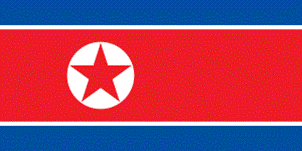STAMP ISSUES RELATED TO ICAO (1978-1983)
Democratic People's Republic of Korea: 75th Birth anniversary of Dag Hammarskjöld
|
Issue date: 26/12/1980
|
|||
|
|
Souvenir sheet: 1. On the stamp: Dag Hammarskjöld, United Nations Secretary General, UN buildings in Geneva. 2. On the sheet: UN buildings in New York and Geneva; emblems of UN and its agencies (including ICAO); peace doves; UPU emblem with a dove carrying a letter.
Original picture of Dag Hammarskjöld taken by the UN:
|
||
|
|
Souvenir sheet: 1. On the stamps: Dag Hammarskjöld, United Nations Secretary General, UN buildings in New York (left) and Geneva (right). 2. On the sheet: UN buildings in Vienna; emblems of UN and its agencies (including ICAO); peace doves; UPU emblem with a dove carrying a letter.
|
||
|
|
|
Perforated and imperforated. |
|
|
Full sheet of stamps (cancelled to order - CTO):
|
|||
|
|
Imperforated sheets. |
||
|
|
|
||
|
|
Cancelled to Order (CTO). |
||
|
|
|
||
|
First Day Covers (addressed; imperforate). The cachet shows the North Korean flag and the Grand Theater in Pyongyang, opened in 1960.
|
|||
|
|
|||
|
Background: List of emblems surrounding the central stamp (from left down to right up): - WMO (World Meteorological Organization); - IAEA (International Atomic Energy Agency); - IMCO (In 1982, this Agency changed its name from Inter-Governmental Maritime Consultative Organization – IMCO - to International Maritime Organization - IMO, while maintaining the emblem of IMCO); - ITU (International Telecommunication Union); - WIPO (World Intellectual Property Organization); - ICAO (International Civil Aviation Organization); - UNESCO (United Nations Educational, Scientific and Cultural Organization); - ILO (International Labour Organization); - FAO (Food and Agriculture Organization); - WHO (World Health Organization).
The most dangerous problem stemming from the new independence of various developing countries, that of the newly liberated Congo, arose in July 1960, when the new government asked the UN for help, as it was faced with a mutiny in its army, secession of its province of Katanga, and intervention of Belgian troops. The UN responded by sending a peacekeeping force, with Dag Hammarskjöld in charge of operations. When the situation deteriorated during the year that followed, Hammarskjöld had to deal with almost insuperable difficulties in Congo and with criticism in the UN. A last crisis for him came in September 1961, when, arriving in Leopoldville to discuss details of the UN aid with the Congolese government, he learned that fighting had erupted between Katanga troops under Moïse Tshombe and the non-combatant forces of the UN. A few days later on 17 September night, he left by air for a personal conference with President Tshombe of Katanga in an effort to secure a cease-fire; his Douglas DC-6 airliner SE-BDY crashed near Ndola, Northern Rhodesia (now Zambia) and Dag Hammarskjöld perished as a result of the crash, as did all of the 15 other passengers. The circumstances of the crash are still unclear. The official date of the death reported in all the reference material is 18 September 1961, as several watches on dead bodies had all stopped between 0010 and 0015 hrs. The two souvenir sheets issued by the Democratic People’s Republic of Korea for the 75th anniversary of Dag Hammarskjöld’s birth bear the date of death as 17 September instead of 18 September 1961. He was awarded the Nobel Peace Prize posthumously. Dag Hammarskjöld remains the only U.N. Secretary-General to die in office. More information on this issue can be found by clicking on: Philatelic Laxity: Dag Hammarskjöld.
Registered service cover sent from the UN Peace-Keeping Forces in Congo to Sweden. Postmark dated 28 October 1960 at Élisabethville (now Lubumbashi), province of Katanga, Congo. Stamp overprinted with “KATANGA”.
The FDCs
show the flag of North Korea. The North Korean flag was
officially adopted on 9 September 1948, after the
separation of Korea into two separate nations. The
national flag of the Democratic People’s Republic of Korea (DPRK) comprises
three horizontal bands: the middle band is red while the top and bottom bands
are blue in colour. The red band is bordered both above and below by a narrow
white horizontal stripe. The red panel also bears a white disk that encircles
a red five-pointed star. |
|||















